|
||||
|
||||
|
|
|
||||
|
||||
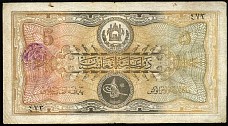 N.30, P.11 5 Afghanis SH1307 (1928) 161x87mm |
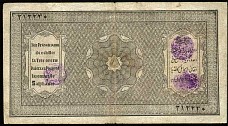 Back |
|||
| N.32,
P.12 10 Afghanis SH1307 (1928) |
Images Needed | |||
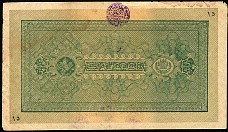 N.34, P.13 50 Afghanis SH1307 (1928) 197x111mm |
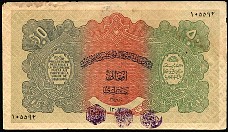 Back |
|||
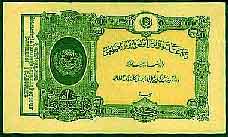 N.36, P.14a 1 Rupee ND(1928-29) w/o handstamps |
Back Image Needed | |||
| N.37,
P.14b 1 Rupee SH1307 (1928) w/ Handstamps |
Images Needed | |||
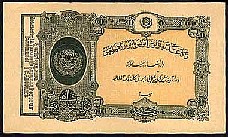 N.38, P.UNL(~14b) 1 Rupee SH1307 Black, Tan underprint |
Back Image Needed | |||
|
Habibullāh
Kalakāni
was King of Afghanistan from January to October 1929 after deposing Amanullah Khan with the help of various Afghan tribes who opposed
modernization of Afghanistan.
After gaining power in Kabul, he named himself
Habībullāh Khādem-e Dīn-e Rasūlallāh ("The servant of the religion
of the messenger of God"). He was himself defeated and overthrown nine
months later by Mohammed Nadir Khan. While the Afghan National Army was engulfed in severe battle in Laghman and Nangarhar, Kalakani and his Tajik forces began to attack Kabul from the north. The revolt caught steam and right away the country was in civil war. Tribes from Waziristan had the southern areas of Kabul surrounded, and Kalakani's rebels were moving into the heart of Kabul from the north. At first he was repelled but after taking refuge in Paghman for several days he and his forces managed to take over Kabul. In the middle of the night, on 14 January 1929,
Amanullah Khan handed over his Kingdom to his brother Amir Inayatullah
Khan and escaped from Kabul towards
Kandahar
in the south. Two days later, on 16 January 1929, Kalakani wrote a letter
to King Inayatullah Khan to either surrender or prepare to fight.
Inayatullah Khan's response was that he had never sought nor wished to be
king and agreed to abdicate and proclaim Kalakani as the King on 17
January By September 1929, Amanullah Khan had stopped in Kandahar to regroup his followers and recalled his top general, Nadir Khan, from Europe. General Nadir Khan's army quickly passed through the west and southern Afghanistan. They had better weapons and the support of the people as many volunteers joined the army. Nadir Khan was furnished with thousands of troops from various parts of Pashtunistan, including southern Afghanistan. The troops fast approached Kabul and slowly began defeating the forces loyal to Kalakani. By late October 1929, Kabul was surrounded by Nadir Khan's army. It included Shah Wali Khan, brother of Nadir Khan and brother-in-law of Amanullah. The two brothers recaptured the Arg and arrested Kalakani along with his followers. Kalakani was executed by firing squad on 1 November 1929 along with his brother and ten other rebel leaders. The bodies were subsequently put on display, while already stiff, as is shown by the awkwardness of their positions.[2] His place of burial is unconfirmed but it is probably his home village, Kalakan. Above notes courtesy Wikipedia NUMISMATIC NOTES: |
![]()